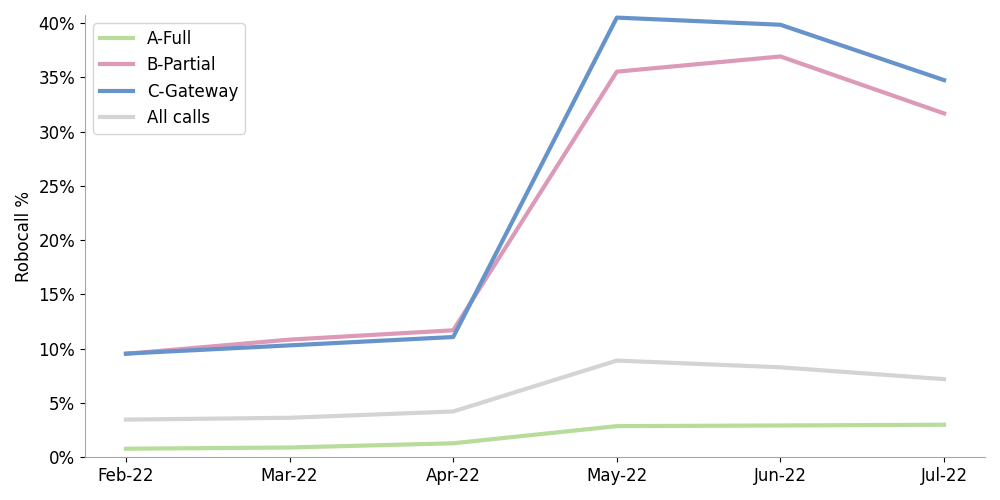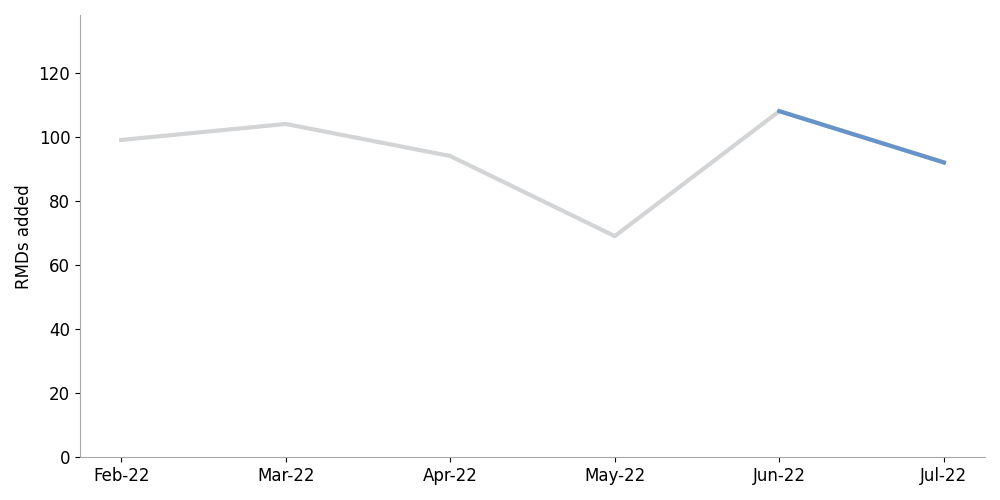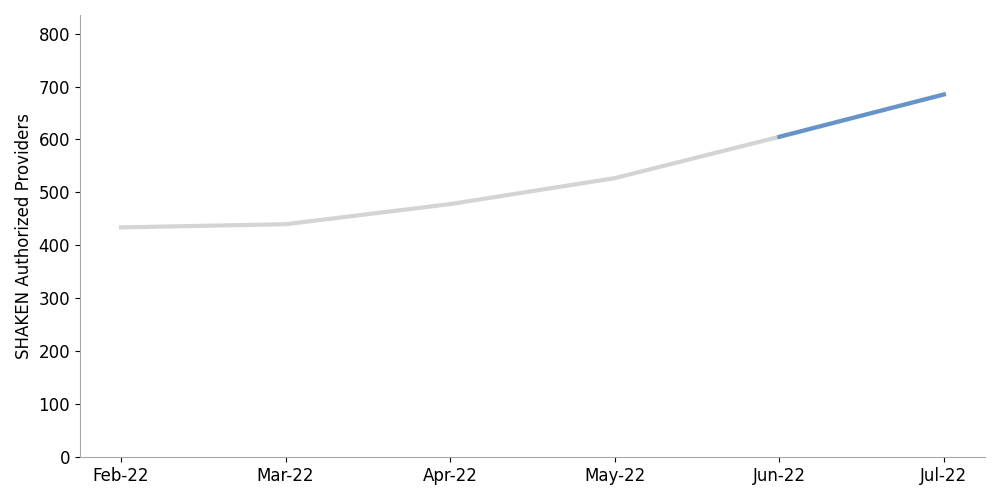STIR/SHAKEN statistics from July 2022
Robocalls signed with STIR/SHAKEN call authentication remain high, but other statistics show possible signs of change. Are these just blips, or new trends? Let’s have a look.
We’ve been publishing monthly STIR/SHAKEN statistics since April 2021. These numbers are gathered from over 100 voice service providers using our STIR/SHAKEN and robocall prevention solutions. The data describe calls they received from 395 other voice service providers that originated calls, including some robocalls, signed with STIR/SHAKEN.
Many Robocalls are signed with B or C attestation
Calls Signed with B or C Were Over 5 Times More Likely to be Robocalls

Figure 1. Robocall % by Verification Status in July 2022
Figure 1 compares the percentage of robocalls by attestation level, for unsigned calls, and for all calls in July 2022.
The red line shows the robocall percentage for all calls, which was 8.29%. As we’ve reported in previous months, many of these calls were signed by a downstream intermediate provider using their own SHAKEN certificate. This is how robocallers and robocall-friendly providers have adapted to the call authentication and robocall mitigation regulations.
Signed Robocalls Continued in July

Figure 2. Signed Robocalls by Attestation Last 6 Months
Figure 2 shows this trend over the past six months. Even in February, signed robocalls were high, around 10% of calls signed with B or C attestation. This exploded in May 2022 to nearly 40% of signed calls. The numbers came down in July but are still very high.
SHAKEN participation increases
There are some encouraging trends in SHAKEN participation.
Increase in SHAKEN Participation

Figure 3. Monthly Number of OSPs Sending Signed Calls
Figure 3 shows that the number of Originating Service Providers (OSPs) signing calls increased from 344 in June to 395 in July, a 14.8% increase. This follows a 21.6% increase in June.
Robocall Mitigation Database New Filings Down in June

Figure 4. New Robocall Mitigation Database New Filings by Month
Figure 4 shows a 15% decrease in new Robocall Mitigation Database filings in July. This follows a 51% increase in June.
Increase in SHAKEN Authorized Providers

Figure 5. STIR/SHAKEN Authorized Providers by Month
Figure 5 shows that the number of SHAKEN authorized providers increased 13% in July, from 605 to 685. This follows a 15% increase in June.
Few calls are signed
Despite a steady increase in SHAKEN participants, we aren’t seeing an increase in signed calls.
Most Calls Were Unsigned

Figure 6. Percentage of Calls by Verification Status
Figure 6 shows that 77.23% of calls received were unsigned. This is down slightly from June.
Percentage of Signed Calls Stays Level

Figure 7. The Percentage of Signed Calls Last 6 Months
Figure 7 shows that the percentage of signed calls continues to hover around 24%, despite the increased number of OSPs and SHAKEN authorized providers. Let’s look at why this is happening.

What the statistics tell us
- Calls signed with B or C attestation have a startling high percentage of robocalls.
- Robocall-friendly providers evade accountability by using the third-party signer exploit.
- These originating service or gateway providers can’t be removed from the SHAKEN ecosystem because they never entered the governance framework.
- SHAKEN participation continues an upward trend, yet the percentage of signed calls remains stuck at around 24%.
- Many calls cross a non-IP TDM segment somewhere along the call path.
The solutions to these problems are obvious:
- Close the third-party signing exploit. The SHAKEN framework was designed with a governance framework—use it.
- A provider must be approved for SHAKEN by the Policy Administrator in order to claim a SHAKEN implementation.
- If a provider isn’t approved to do SHAKEN, then they really aren’t doing SHAKEN.
- When a downstream intermediate provider signs a call using its own certificate, that does not make upstream providers SHAKEN participants.
- The FCC should begin to phase out the non-IP SHAKEN exemption.
- Providers that rely on non-IP technology or interconnections should be required to either migrate to IP technology and implement SHAKEN or implement either of the non-IP SHAKEN standards on the non-IP parts of their network.
- Providers that only use IP technology and have implemented SHAKEN won’t have to do anything new. They won’t know, or need to know, that the SHAKEN information they send and receive may use these non-IP SHAKEN methods somewhere else along the call path.
TransNexus solutions
TransNexus is a leader in developing innovative software to manage and protect telecommunications networks. The company has over 20 years’ experience in providing telecom software solutions including toll fraud prevention, robocall mitigation and prevention, TDoS prevention, analytics, routing, billing support, STIR/SHAKEN and SHAKEN certificate services.
Contact us today to learn more.
Our STIR/SHAKEN products:
- Work with your existing network
- Support SIP and TDM
- Affordable, easy to deploy